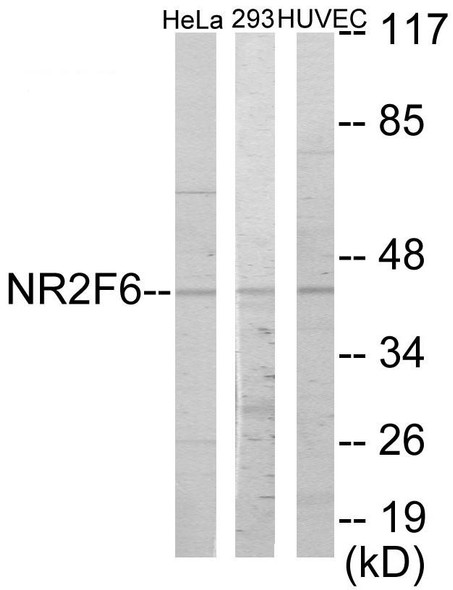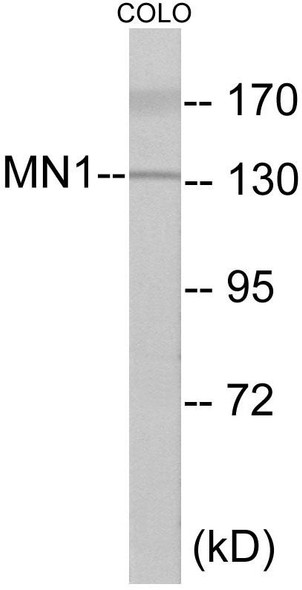Description
PTTG Colorimetric Cell-Based ELISA
The PTTG Colorimetric Cell-Based ELISA kit is a cutting-edge tool for analyzing the expression of pituitary tumor transforming gene (PTTG) in cell cultures. This kit is designed to provide accurate and reliable results, allowing researchers to study the role of PTTG in various cellular processes.PTTG is a key regulator of cell division and has been implicated in the development and progression of various types of cancer. By using this ELISA kit, researchers can gain valuable insights into the mechanisms underlying tumor growth and potentially identify new therapeutic targets for cancer treatment.
With its high sensitivity and specificity, the PTTG Colorimetric Cell-Based ELISA kit is perfectly suited for a wide range of research applications in the fields of oncology and cell biology. Don't miss out on this powerful tool for advancing your research efforts. Visit our website to learn more and order your kit today.
| Product Name: | PTTG Colorimetric Cell-Based ELISA |
| Product Code: | CBCAB01040 |
| ELISA Type: | Cell-Based |
| Target: | PTTG |
| Reactivity: | Human, Mouse, Rat |
| Dynamic Range: | > 5000 Cells |
| Detection Method: | Colorimetric 450 nmStorage/Stability:4°C/6 Months |
| Format: | 96-Well Microplate |
The PTTG Colorimetric Cell-Based ELISA Kit is a convenient, lysate-free, high throughput and sensitive assay kit that can detect PTTG protein expression profile in cells. The kit can be used for measuring the relative amounts of PTTG in cultured cells as well as screening for the effects that various treatments, inhibitors (ie siRNA or chemicals), or activators have on PTTG.
Qualitative determination of PTTG concentration is achieved by an indirect ELISA format. In essence, PTTG is captured by PTTG-specific primary antibodies while the HRP-conjugated secondary antibodies bind the Fc region of the primary antibody. Through this binding, the HRP enzyme conjugated to the secondary antibody can catalyze a colorimetric reaction upon substrate addition. Due to the qualitative nature of the Cell-Based ELISA, multiple normalization methods are needed:
| 1. | A monoclonal antibody specific for human GAPDH is included to serve as an internal positive control in normalizing the target absorbance values. |
| 2. | Following the colorimetric measurement of HRP activity via substrate addition, the Crystal Violet whole-cell staining method may be used to determine cell density. After staining, the results can be analysed by normalizing the absorbance values to cell amounts, by which the plating difference can be adjusted. |
| Database Information: | Gene ID: 754, UniProt ID: P53801, OMIM: 603784, Unigene: Hs.474010 |
| Gene Symbol: | PTTG1IP |
| Sub Type: | None |
| UniProt Protein Function: | PTTG1IP: May facilitate PTTG1 nuclear translocation. |
| UniProt Protein Details: | Protein type:Membrane protein, integral Chromosomal Location of Human Ortholog: 21q22.3 Cellular Component: membrane; cytoplasm; integral to membrane; nucleus Molecular Function:receptor activity Biological Process: protein import into nucleus; multicellular organismal development |
| UniProt Code: | P53801 |
| NCBI GenInfo Identifier: | 4757886 |
| NCBI Gene ID: | |
| NCBI Accession: | NP_004330.1 |
| Molecular Weight: | ~ 22kDa |
| NCBI Full Name: | pituitary tumor-transforming gene 1 protein-interacting protein isoform 1 |
| UniProt Protein Name: | Pituitary tumor-transforming gene 1 protein-interacting protein |
| UniProt Synonym Protein Names: | Pituitary tumor-transforming gene protein-binding factor |
| Protein Family: | Dof zinc finger protein |
| UniProt Gene Name: | PTTG1IP |
| UniProt Entry Name: | PTTG_HUMAN |
| Component | Quantity |
| 96-Well Cell Culture Clear-Bottom Microplate | 2 plates |
| 10X TBS | 24 mL |
| Quenching Buffer | 24 mL |
| Blocking Buffer | 50 mL |
| 15X Wash Buffer | 50 mL |
| Primary Antibody Diluent | 12 mL |
| 100x Anti-Phospho Target Antibody | 60 µL |
| 100x Anti-Target Antibody | 60 µL |
| Anti-GAPDH Antibody | 60 µL |
| HRP-Conjugated Anti-Rabbit IgG Antibody | 12 mL |
| HRP-Conjugated Anti-Mouse IgG Antibody | 12 mL |
| SDS Solution | 12 mL |
| Stop Solution | 24 mL |
| Ready-to-Use Substrate | 12 mL |
| Crystal Violet Solution | 12 mL |
| Adhesive Plate Seals | 2 seals |
The following materials and/or equipment are NOT provided in this kit but are necessary to successfully conduct the experiment:
- Microplate reader able to measure absorbance at 450 nm and/or 595 nm for Crystal Violet Cell Staining (Optional)
- Micropipettes with capability of measuring volumes ranging from 1 µL to 1 ml
- 37% formaldehyde (Sigma Cat# F-8775) or formaldehyde from other sources
- Squirt bottle, manifold dispenser, multichannel pipette reservoir or automated microplate washer
- Graph paper or computer software capable of generating or displaying logarithmic functions
- Absorbent papers or vacuum aspirator
- Test tubes or microfuge tubes capable of storing ≥1 ml
- Poly-L-Lysine (Sigma Cat# P4832 for suspension cells)
- Orbital shaker (optional)
- Deionized or sterile water
*Note: Protocols are specific to each batch/lot. For the correct instructions please follow the protocol included in your kit.
| Step | Procedure |
| 1. | Seed 200 µL of 20,000 adherent cells in culture medium in each well of a 96-well plate. The plates included in the kit are sterile and treated for cell culture. For suspension cells and loosely attached cells, coat the plates with 100 µL of 10 µg/ml Poly-L-Lysine (not included) to each well of a 96-well plate for 30 minutes at 37°C prior to adding cells. |
| 2. | Incubate the cells for overnight at 37°C, 5% CO2. |
| 3. | Treat the cells as desired. |
| 4. | Remove the cell culture medium and rinse with 200 µL of 1x TBS, twice. |
| 5. | Fix the cells by incubating with 100 µL of Fixing Solution for 20 minutes at room temperature. The 4% formaldehyde is used for adherent cells and 8% formaldehyde is used for suspension cells and loosely attached cells. |
| 6. | Remove the Fixing Solution and wash the plate 3 times with 200 µL 1x Wash Buffer for five minutes each time with gentle shaking on the orbital shaker. The plate can be stored at 4°C for a week. |
| 7. | Add 100 µL of Quenching Buffer and incubate for 20 minutes at room temperature. |
| 8. | Wash the plate 3 times with 1x Wash Buffer for 5 minutes each time. |
| 9. | Add 200 µL of Blocking Buffer and incubate for 1 hour at room temperature. |
| 10. | Wash 3 times with 200 µL of 1x Wash Buffer for 5 minutes each time. |
| 11. | Add 50 µL of 1x primary antibodies (Anti-PTTG Antibody and/or Anti-GAPDH Antibody) to the corresponding wells, cover with Parafilm and incubate for 16 hours (overnight) at 4°C. If the target expression is known to be high, incubate for 2 hours at room temperature. |
| 12. | Wash 3 times with 200 µL of 1x Wash Buffer for 5 minutes each time. |
| 13. | Add 50 µL of 1x secondary antibodies (HRP-Conjugated AntiRabbit IgG Antibody or HRP-Conjugated Anti-Mouse IgG Antibody) to corresponding wells and incubate for 1.5 hours at room temperature. |
| 14. | Wash 3 times with 200 µL of 1x Wash Buffer for 5 minutes each time. |
| 15. | Add 50 µL of Ready-to-Use Substrate to each well and incubate for 30 minutes at room temperature in the dark. |
| 16. | Add 50 µL of Stop Solution to each well and read OD at 450 nm immediately using the microplate reader. |
(Additional Crystal Violet staining may be performed if desired – details of this may be found in the kit technical manual.)






